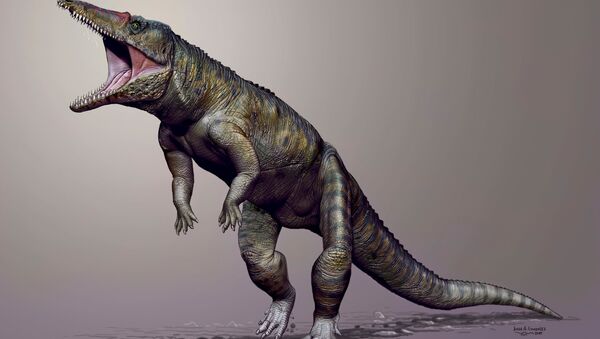An awe-inspiring creature over 2.7 meters in length which likely walked on its hind legs used to inhabit the a territory of what is now North Carolina some 230 million years ago, prior to the appearance of dinosaurs in the area.
The study released by NC State University and the NC Museum of Natural Sciences in the latest issue of the journal Scientific Reports has named the beast Carnufex carolinensis, Latin for “Carolina Butcher”.
“Butcher seemed a very appropriate way to get that into the minds of people," Live Science website quotes Zanno as saying.
The scary crocodile ancestor apparently stalked armored reptiles and our early mammalian relatives.
The researchers created a detailed 3-D model of the beast’s skull using a high-resolution surface scanner to digitize each unearthed fossil from what was left of the animal's head.
Having compared the creature’s skull and his forelimbs, the scientists ascertained that the “butcher” might have walked on his two legs.




